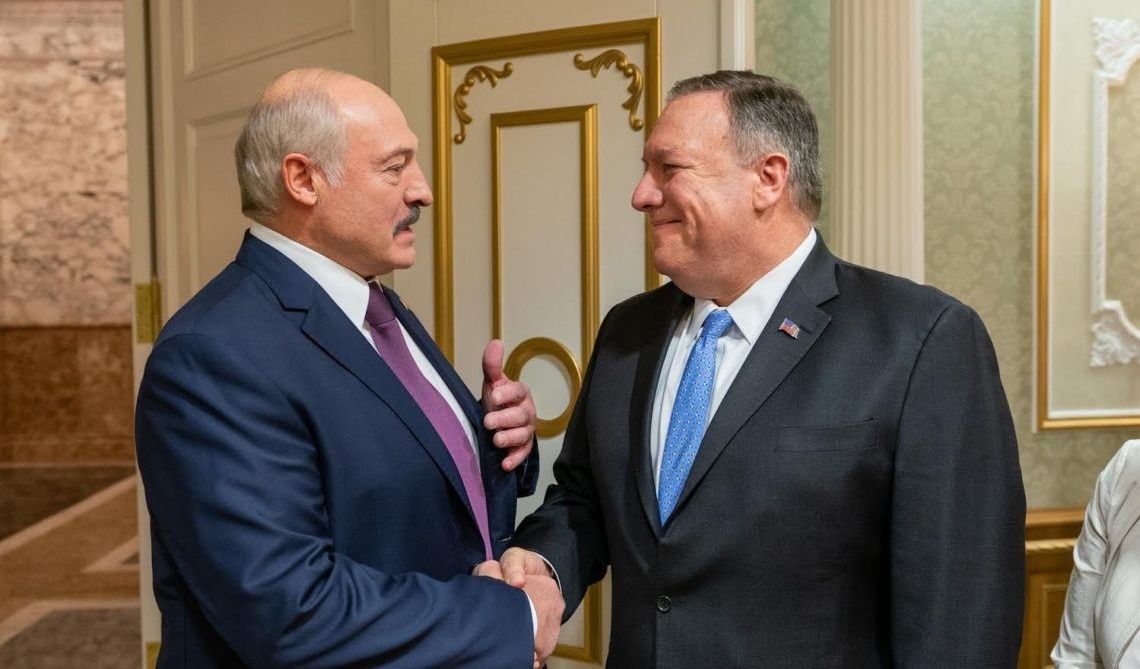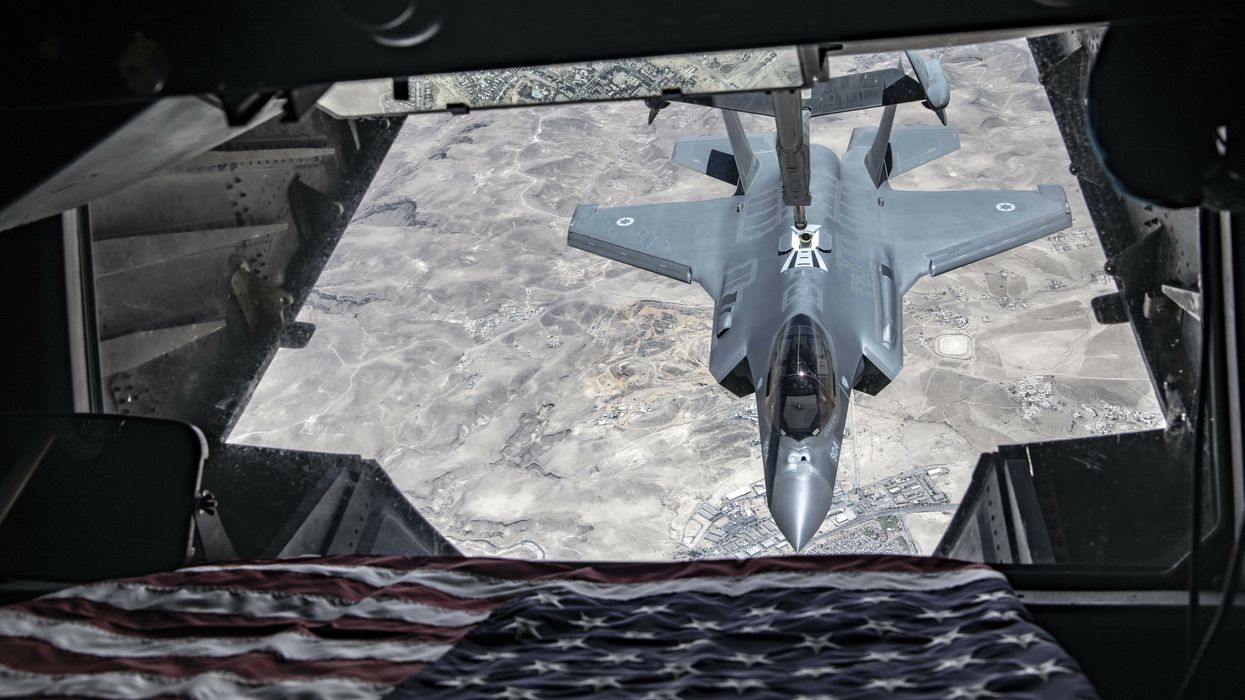Russia’s invasion of Ukraine opened with a march toward Kyiv. The northern thrust of this push came from Belarusian territory. To this day, Belarus remains a hub for Russian attacks on its southern neighbor. Worryingly, the country now hosts Russian tactical nuclear weapons, a situation unthinkable a few years earlier. Why did Belarus, previously keeping its distance from Russian power, throw in its lot with Moscow? Could the United States have prevented such an outcome?
Since its independence, Belarus has had close relations with Russia but always stayed out of the Kremlin’s overwhelming shadow. Following the 2008 Russo-Georgian War, Minsk refused to recognize the independence of Abkhazia and South Ossetia, despite Russia’s insistence. A dispute over dairy product exports led to the 2009 “Milk War.” Relations became so poor that Russian TV channels aired programs presenting President Alexander Lukashenko as a despicable tyrant, something unimaginable today.
Before 2014, Americans and Europeans had little sympathy for “Europe’s last dictatorship.” But the Crimean annexation, the Donbas war, and the Russian threat’s resurrection changed the West’s outlook. Some envisioned pulling Belarus away from Russia’s orbit and associating it with Europe instead. Western capitals put democracy promotion on hold for dialogue’s sake. Belarus, too, felt an existential threat and pursued better relations with the West. It became defiant toward Moscow and tried to limit Russian influence over the national military.
Belarus released all its political prisoners in 2015 to please the United States. In turn, Washington ended some sanctions on the regime. While the Russians pushed hard to establish an air base, the Belarusians resisted. They also distanced themselves from Russia’s most confrontational policies. For instance, Lukashenko invited NATO observers to the massive 2017 Russian-led Zapad military maneuvers, fearing the exercises would scare away its Western neighbors.
Bilateral U.S.-Belarus relations kept improving. In October 2018, Assistant Secretary of State Wess Mitchell was the first senior American diplomat to travel to Belarus and meet Lukashenko in over a decade. Diplomatic contacts intensified, and the two countries signed a bilateral “Open Skies” agreement, a sign of increasing trust. Then-national security adviser John Bolton visited Minsk in August 2019. Lukashenko responded enthusiastically to American openings, encouraging him to resist Russian pressure to accelerate political and economic integration in the supranational “Union State.”
That year also saw Belarus take significant steps to hedge against the Russian risk. Minsk introduced a policy of “Belarusianization” to mobilize the populace’s nationalism and insulate it from Russian societal influence while introducing a visa-free regime for EU and American citizens’ short-term travels. The country intensified its efforts to modernize the military and sent security cooperation feelers toward Lithuania, Poland, and Ukraine, all countries at odds with Russia. Minsk expressed hope for building up ties with NATO.
In February 2020, then-Secretary of State Mike Pompeo visited Belarus. Never had U.S.-Belarus relations been so cordial, and never had Russia-Belarus relations been so poor. When Belarus faced an oil price dispute with Russia, Pompeo quickly agreed to sell it oil, justifying that this deal “strengthens Belarusian sovereignty and independence,” a wise policy if one fears Russian influence. But the U.S.-Belarusian honeymoon was not to last, and the Russians soon gained more than they ever bargained for.
In 2020, Lukashenko’s decision to run for the upcoming presidential election profoundly disgruntled the liberal opposition, as the election would likely be rigged in his favor. Indeed, he won the August election in a landslide. This engendered a mass protest movement against the regime. Following the EU, the United States refused to recognize Lukashenko’s victory, sanctioned his regime, and openly sided with the opposition. U.S.-Belarus ties became nonexistent.
After relations with the West collapsed, Belarus threw in its lot with Moscow. Sensing the opportunity, Putin was quick to congratulate Lukashenko for his victory. He assured Minsk he would deploy Russian security forces if the protest movement got out of control. Now in the Kremlin’s debt, Lukashenko and Putin had a flurry of conversations and meetings, and Lukashenko accelerated the Union State integration process in exchange for Russian money. In retaliation to the West’s hostility, Minsk engineered a migrant crisis by pushing large numbers of refugees toward the Polish border.
Throughout 2021 and early 2022, military cooperation reached a height unseen before, which we know in hindsight was preparation for Russia’s invasion of Ukraine. The two countries’ air defense units started joint combat duties, and Belarus finally agreed to host the Russian air force. In November 2021, Lukashenko promised to intervene in a future war in Ukraine and acknowledged Russian sovereignty over Crimea. Belarus also decided to amend its constitution to introduce Russian nuclear weapons. Previously, Russian forces could enter Belarus only during prearranged exercises. But pretexting military maneuvers, Russian troops arrived en masse. Ultimately, Belarus received the West’s opprobrium for accepting that Russian forces use its territory to attack Ukraine on February 24, 2022.
This sequence shows that adroit statecraft can accomplish much at little cost and that ideology can create widespread, unforeseen damage to U.S. interests. Minsk resisted aligning with Moscow until 2020 despite intense Russian pressure. Indeed, the U.S. and European engagement policy after the 2014 Ukrainian crisis offered Belarus leverage over the Kremlin. However, following the 2020 elections, Washington abandoned engagement and opted for maximum pressure, perceived as regime change. Out of options, Lukashenko requested Russian help. Now forced to do Putin’s bidding, he accepted the Russian military on his soil, enabled the thrust toward Kyiv in early 2022, and now even hosts Russian nuclear weapons.
Washington had no direct interest in openly siding with the opposition against Lukashenko. Had the protesters seized power, it could have endorsed them. Had Lukashenko triumphed, it could have maintained the course of strengthening Belarus’s hand against Russia. But America’s urge to support the losing side for ideological motives sank U.S.-Belarus relations to the bottom and made it impossible for Minsk to play the West against Russia. Lukashenko was then forced to follow the orders of Putin, his last backer, ultimately leading to Belarusian support for Russia’s invasion of Ukraine.
Now under Russian military control, independent Belarus’s race is run. The current regime might remain in office as a Russian satrap. But the Kremlin will probably conclude that annexing the country represents the safest option to guarantee long-term domination and grow Russia’s power base. Counterfactuals are always risky, but Moscow would have struggled to subjugate Lukashenko had the United States not jettisoned engagement for maximum pressure in 2020.
Although Belarus’s fate is sealed, Washington must not repeat the same mistake elsewhere. Many potential partners to counterbalance Russian and Chinese power are unsavory authoritarian states. Preaching non-proliferation and liberalization, legacy neoconservative policies pushed North Korea toward Beijing despite Pyongyang expressing fear of China’s rise. While Iran traditionally eschewed great power alignment, American intransigence and Trump’s abandonment of the 2015 nuclear deal encouraged Tehran to embrace China and Russia, even supporting Putin’s war effort.
Washington can continue growing Beijing and Moscow’s spheres of influence by letting ideology drive American foreign policy. In that case, China and Russia will gain additional means to threaten the United States and its allies. Otherwise, it could use efficient statecraft, such as its pre-2020 Belarus policy, to secure new partners and limit its rivals’ opportunities. Of prudence or ideology, which will prevail?
















